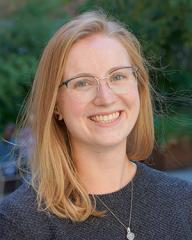
I am a PhD student in the Biostatistics department. I completed my undergraduate degree in Mathematics and Religion, with a concentration in Statistics at St. Olaf College in Northfield, MN. I grew up on Madeline Island, WI, and in St. Paul, MN.
I’m currently working with Jon Wakefield on developing methods for spatio-temporal modeling of HIV prevalence at a subnational level, primarily in sub-Saharan Africa. We’re interested in studying higher-order interactions in the generalized linear mixed models frequently used in this field, particularly so that we can account for interactions between space, time, and age. Such interactions are important if we want estimates stratified by various covariates, and they pose statistical challenges related to identifiability and computational tractability. We are exploring what sorts of constraints are required in our models in order to obtain identifiable space-time smoothing parameters, how they affect computation time, and whether there are smart ways to get identifiable parameters while maintaining computational tractability. Additionally, we are working with UNAIDS and collaborators at Imperial College on producing HIV prevalence estimates and maps using a suite of discrete spatial models.
In my spare time I enjoy rock climbing, knitting, hiking, and backpacking.
I am a PhD student in the Biostatistics department. I completed my undergraduate degree in Mathematics and Religion, with a concentration in Statistics at St. Olaf College in Northfield, MN. I grew up on Madeline Island, WI, and in St. Paul, MN.
I’m currently working with Jon Wakefield on developing methods for spatio-temporal modeling of HIV prevalence at a subnational level, primarily in sub-Saharan Africa. We’re interested in studying higher-order interactions in the generalized linear mixed models frequently used in this field, particularly so that we can account for interactions between space, time, and age. Such interactions are important if we want estimates stratified by various covariates, and they pose statistical challenges related to identifiability and computational tractability. We are exploring what sorts of constraints are required in our models in order to obtain identifiable space-time smoothing parameters, how they affect computation time, and whether there are smart ways to get identifiable parameters while maintaining computational tractability. Additionally, we are working with UNAIDS and collaborators at Imperial College on producing HIV prevalence estimates and maps using a suite of discrete spatial models.
In my spare time I enjoy rock climbing, knitting, hiking, and backpacking.